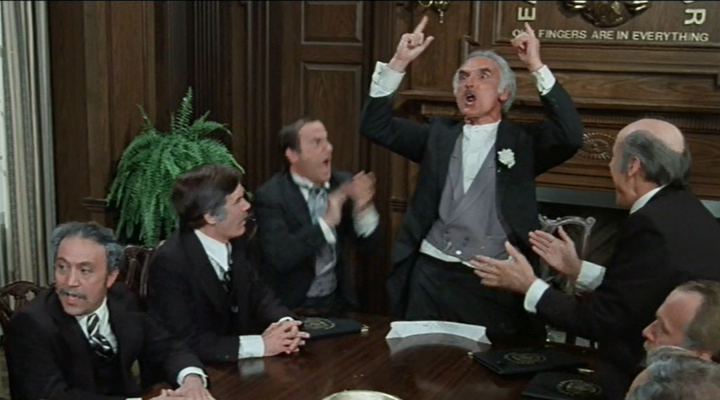
A company that deserved a shareholder-value makeover
A company that deserved a shareholder-value makeover

Merriam-Webster defines a conglomerate as “a large business that is made of different kinds of companies.” That doesn’t begin to describe the wacky business combinations that grew out of the 1960s. Conglomerates like ITT, Textron, LVC and Gulf and Western Industries were the darlings of Wall Street, but by the 1980s many had been dismantled or restructured into leaner, more focused corporations.
What happened?
First, let’s start with the wackiness. Imagine a company that began by making car bumpers buying a Hollywood movie studio. That was Gulf and Western, a symbol of conglomerate excess that started in the late 1950s. Over the next few decades, Gulf and Western bought not only Paramount Studios, but companies that mined zinc, grew sugar, made chemicals, cigars, R&B records, mattresses and caskets.
It even bought the company that owned the Miss Universe pageant. At one point G&W had over 100 businesses.
What did Miss Universe have to do with auto parts? Nothing. But companies that wanted to grow quickly were limited by antitrust laws that made it hard for companies to acquire their competitors. Gerald Davis, author of “The Vanishing American Corporation,” said conglomerates grew by “buying growth” rather than creating it internally.

CEOs had personal incentives to buy growth. At the time, executive salaries were often tied more to the size of a company than to its performance. A spot on the Fortune 500, which ranks companies by total revenue, was especially coveted.
There was also a business strategy behind these corporate behemoths. The thinking at the time was that a conglomerate’s diversification was its strength: A rainbow of companies could arguably ride out the ups and downs of a business cycle that affects industries differently.
Mario Gabelli, chairman and CEO of GAMCO Investors, analyzed conglomerates at his first Wall Street job in the 1960s.
“You basically bought a company,” he said, “your stock was at 10 times cash flow, you bought somebody at four times cash flow, you immediately added to your earnings, the Street loved you, you would report higher earnings and your stock would go up.”
That, of course, allowed the conglomerate to buy even more companies. Jeffrey Madrick, director of the Schwartz Rediscovering Government Initiative at the Century Foundation, said a high stock price was key.
“If the conglomerate’s stock price was high, they need only give, say, 10 shares to buy a company,” Madrick explained. “If it had been much lower, they would have had to give, say, 20 shares to buy a company. So they could gobble up these companies, add earnings to their own pile of earnings, and instead of those companies selling at the low price earnings multiples they once had sold at, they would sell at the new price multiple of an LTV or ITT or Gulf and Western. It was a magic money machine.”

Gulf & Western CEO Charles Bluhdorn.
The money machine led to spending sprees. One year, Gulf and Western bought 23 companies. “Synergy,” the idea that the acquired companies would prosper better under one roof than alone, was the buzzword. Investors believed conglomerates’ hard-charging CEOs, like G&W’s Charles Bluhdorn, had the stuff to make it work.
Bluhdorn, called “the Mad Austrian of Wall Street” in Life magazine, was a famously temperamental workaholic who meddled in Paramount’s moviemaking. He even watched screen tests for the studio’s 1972 classic “The Godfather.”
But conglomerates and the corporate titans who led them couldn’t bluster their way through a decadelong bear market and stagflation. As interest rates rose in the late ’60s, profits weakened and so did stock prices. Growth by acquisition stalled. Analysts, regulators and the media began to suspect clever accounting had made the companies look stronger than they were.
James Schrager, a professor at the University of Chicago’s Booth School of Business, said the new mantra on Wall Street became “focus equals power,” the idea that if you concentrate on one thing in business, you’re more likely to be a winner. The conglomerates didn’t have that.
“So once that discount set in,” Schrager said, “the market valued the shares so low of companies like Gulf and Western that you really had to break them up to get shareholders the value that was locked up inside their holdings.”
In other words, the conglomerate was worth less than the sum of its parts. Investors were desperate for higher returns and pushed CEOs and boards to increase profits and raise stock prices. The corporate raiders of the ’80s weren’t subtle about it. They staged hostile takeovers of undervalued companies, sold off assets and reaped the profits.
“There’s just never been anything like it in American history,” Gerald Davis said. “A third of the biggest corporations disappearing, mostly due to hostile takeovers, very often of conglomerates.”
Some conglomerates broke themselves up before someone else did. In the early 1980s, Bluhdorn’s successor sold off more than 50 companies and restructured G&W into the more narrowly focused Paramount Communications. CEO Martin Davis told Wall Street his main purpose was “to produce the greatest possible value to shareholders.”
“The Price of Profits,” our series with Business Insider, looks at what happens when profits become a company’s product. For more, visit priceofprofits.org.
There’s a lot happening in the world. Through it all, Marketplace is here for you.
You rely on Marketplace to break down the world’s events and tell you how it affects you in a fact-based, approachable way. We rely on your financial support to keep making that possible.
Your donation today powers the independent journalism that you rely on. For just $5/month, you can help sustain Marketplace so we can keep reporting on the things that matter to you.



















